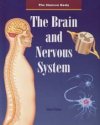Teen Brains, Under Construction Additional Information
Share this:
- Share via email (Opens in new window) Email
- Click to share on Facebook (Opens in new window) Facebook
- Click to share on X (Opens in new window) X
- Click to share on Pinterest (Opens in new window) Pinterest
- Click to share on Reddit (Opens in new window) Reddit
- Share to Google Classroom (Opens in new window) Google Classroom
- Click to print (Opens in new window) Print
You can learn about research on the teenage brain at www.nimh.nih.gov/publicat/teenbrain.cfm (National Institute of Mental Health), www.pbs.org/newshour/bb/science/july-dec04/brain_10-13.html (PBS), and www.pbs.org/wgbh/pages/frontline/shows/teenbrain/(PBS).
Information about brain development can be found at faculty.washington.edu/chudler/dev.html (Neuroscience for Kids).
Additional information about imaging developing brains can be found at www.loni.ucla.edu/~thompson/DEVEL/PR.html(UCLA).
Inside the Teenage Brain
www.pbs.org/wgbh/pages/frontline/shows/teenbrain/
Frontline, PBS
Sohn, Emily. 2004. Worlds of self-esteem. Science News for Kids (Sept. 1). Available at http://www.sciencenewsforkids.org/2004/08/worlds-of-self-esteem-2/.
______. 2004. Music lessons for the brain. Science News for Kids (June 23). Available at http://www.sciencenewsforkids.org/2004/06/music-lessons-for-the-brain-2/.
Books recommended by SearchIt!Science:
 |
The Brain and Nervous System— Steve Parker
Published by Raintree Steck-Vaughn, 1997.
Scientists have estimated that your brain can hold 1,000 times the information contained in a 20-volume encyclopedia. The brain, a wrinkled organ that resembles an oversized walnut, is involved in everything we do—from turning a somersault to a blink of the eye. Diagrams and dramatic magnified and enhanced color photographs show how the different parts of the brain and nervous system function. Sleeping and dreaming, reflexes, mental illness, balance and coordination, and learning are just some of the topics discussed. |
 |
The Brain: Our Nervous System— Seymour Simon
Published by William Morrow/HarperCollins, 1997.
Author Seymour Simon invites you to wiggle your toes and scratch your nose. These activities, and many others, are under the control of your brain, your body’s remarkable message center. The brain is made up of microscopic cells, such as neurons, which carry signals from the brain to other parts of the body. Neurons are very important in our daily lives. For example, if you touch something hot with your finger, signals travel through different kinds of nerves (bundles of neurons) in order to reach the brain. Your brain receives the “hot” message and then sends a response to your spinal cord and to your motor nerves so that you can move your arm and get your poor finger out of harm’s way. This example gives you an idea of the complexity of the brain and the interdependence of the cells in the body. Every day when you run, read, solve a problem, breathe, or throw a ball, remember to be grateful for your “wrinkled blob of pinkish gray jelly” that we know as the brain. Simon’s informative text and full-page illustrations will help you to discover many fascinating features of the brain. |
Power Words
gray matter The brownish-gray tissue of the brain and spinal cord in vertebrate animals, made up chiefly of the cell bodies of neurons. Compare white matter.
hormone A chemical compound that is produced in a gland and then carried to another part of the body by the blood. Hormones control many important body activities, such as growth. Hormones act by causing and adjusting chemical reactions in the body.
MRI Short for magnetic resonance imaging. The use of a strong magnetic field and radio waves to produce a detailed picture of the inside of the body. In MRI, the body is placed inside a magnetic field, radio waves are applied to a body part, and the body part then produces energy in response. A computer measures the kind and amount of energy that is produced and changes it into an image that can be studied by a doctor.
white matter The whitish tissue of the brain and spinal cord in vertebrate animals, made up chiefly of nerve fibers covered in myelin sheaths. Compare gray matter.
Copyright © 2002, 2003 Houghton-Mifflin Company. All rights reserved. Used with permission.
